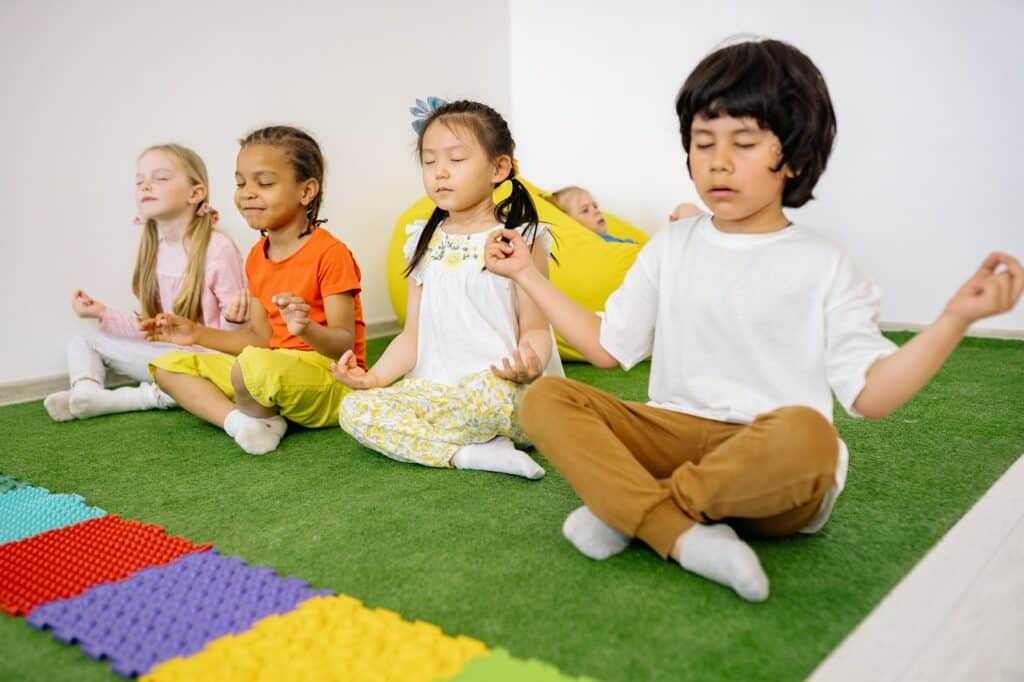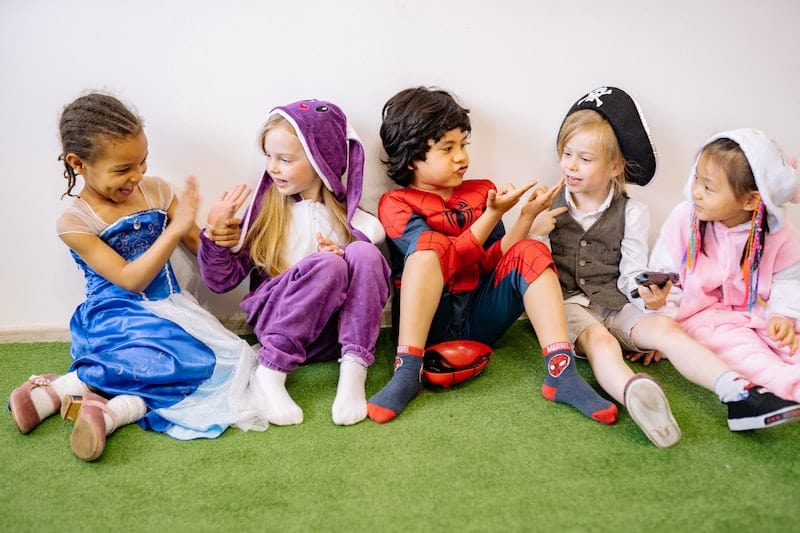When we think of children developing skills, our thoughts often drift to milestones such as learning to ride a bike or acing their first test. However, children need more than physical achievements to thrive in life. Child emotional development includes several skills that help children understand themselves and others better. These skills help them navigate life in a fulfilling way. Furthermore, these skills promote future success well into adulthood.
What is Social and Emotional Development?

Social and emotional development refers to a child’s experience and expression of emotions and how they manage them. It also includes the ability to establish positive and rewarding relationships (Cohen and others 2005).
Social and emotional development is crucial in the first five years of life. However, emotional development continues well into adolescence.
Why is Teaching Child Emotional Development Valuable?
Nurturing a child’s emotional development helps to promote future happiness and success. Studies have shown that teaching emotional development improves students’ social and emotional skills and behaviors. Furthermore, it positively affects classroom organization, classroom management, and more.
4 Skills of Emotional Learning
Emotional development leads to five important skills, according to the National Center for Safe and Supportive Learning Environments. These include: emotional regulation, self and social awareness, learning how to establish positive relationships, and good decision making. These skills are vital to the success of children and adolescents.
Emotional Regulation

Emotional regulation is an essential part of development. It is defined as “The ability to exert control over one’s own emotional state. It may involve behaviors such as rethinking a challenging situation to reduce anger or anxiety, hiding visible signs of sadness or fear, or focusing on reasons to feel happy or calm” (PsychologyToday). Emotional regulation is critical to children’s relationships with themselves and others. Those that don’t have this type of regulation often experience emotional outbursts and isolation. It can also lead to depression and self-harming behaviors. However, it is a teachable skill. Through workshops and lessons in the classroom, we can teach children how to regulate emotions and have control over their thoughts and feelings.
Self and Social Awareness
Learning self-awareness is a critical aspect of emotional development. Self-awareness helps children acknowledge their strengths and weaknesses. This allows them to actively participate in their own success.
Self-aware children typically have more social awareness. Social awareness is the ability to have empathy for others. This leads to understanding the perspective of other cultures and social groups. Both self-awareness and social awareness are vital to the growth of each child and help children grow up to be conscientious adults.
Learning How To Have Positive Relationships
When children learn self and social awareness, they are better able to experience positive relationships. Building positive relationships encompasses several skills. One key aspect is knowing how to express emotions appropriately. At the same time, children need to learn how to respond to others with empathy. Empathy is the ability to emotionally understand the feelings of another.
Other skills children need to learn when building positive relationships include how to:
- make friends
- respond to conflict in a relationship
- listen to others
- give and receive feedback
These are just a few of the wide array of skills needed to build and maintain relationships. Successful relationships and rich social lives produce lasting benefits throughout life.
Good Decision Making
We tend to think good decision-making skills are developed through “trial and error.” However, that is a fallacy. Good decision-making is more than learning from successes and failures. It is a way of thinking about making decisions before a consequence occurs. This skill involves teaching children how to identify the problem, and possible solutions and consequences. By thinking critically about decision-making, they can make better choices.
Good decision-making affects children well throughout childhood and helps them to become more responsible and self-confident.
What are the Emotional Development Stages?
Early Childhood Emotional Development
Social and emotional development occurs rapidly in the first five years of life. This time of development is essential to the ultimate happiness and well-being of children.
In the early stages of child emotional development, children begin to learn self-awareness. In addition, they start exploring how to express emotions. They also learn how to interact with others. Furthermore, they learn how to safely explore their environment. In the early stages, children look to others to learn social cues. These cues help them navigate how to respond and play with others.
These building blocks of emotional development in early childhood are nurtured through positive reinforcement.
Elementary and Middle School Emotional Development

Between the ages of 5-13 emotional development progresses to include more self-regulation, problem-solving, social awareness, and more.
The child emotional development stages are listed below. Note that the time frame may be different for each child: (Source: Child-Encyclopedia).
Early Elementary (K-2nd Grade)
- Learning how to fit in with other children
- Continuing to learn self regulation
- Learning self conscious emotions (such as embarrassment)
- Needing support from adults but growing their self reliance skills
Middle Elementary (3rd-5th Grade)
- Increased problem solving skills
- Distancing self from adults and becoming more peer focused
- Focus on problem solving
- Understanding of multiple emotional states in the same person
- Typically following norms for behavior
Middle School (6-8th grade)
- Increased dependence on peers
- Focus on social awareness and roles
- Learning how to differentiate between close friends and acquaintances
- Becoming more fluent in problem solving with multiple solutions
- Increased emotional empathy
- Learning impression management
High School
- Learning how to communicate emotions and thoughts effectively
- Becoming more proficient with impression management
- Character integration and moral development
- Increased self awareness, particularly emotional awareness
Conclusion
We can increase children’s emotional intelligence to provide them with a better quality of life. Self-confidence, better relationships, and resilience can all be achieved through emotional development. When children are emotionally resilient, they can manage adversity and difficult times. In addition, research has demonstrated that intervening in children’s emotional development has a positive impact on their academic success. Whichever stage of emotional development children are in, there are appropriate lessons and support.
Soul Shoppe has workshops dedicated to the mission of creating safe learning environments. They help eliminate bullying, as well as teach empathy, emotional literacy skills, and conflict resolution. Learn more about social emotional learning for elementary students and social emotional development for middle school programs.
You May Also Like:
Teaching Empathy to Kids and Teenagers
Building Emotional Resilience in Kids
Sources:
Child-Encyclopedia, HelpMeGrow, PsychologyToday, Rasmussen, Understood, WorldBank, BeYou.edu

